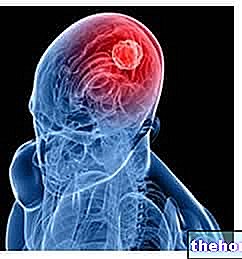Epilepsy and Epileptic Seizures
Epilepsy is a syndrome characterized by the repetition of epileptic seizures due to the hyperactivity of certain brain nerve cells (the so-called "neurons").

- MYCLONIC: mild spasms;
- TONICS: more intense contractions;
- TONICS / CLONICS: violent muscle spasms followed by relaxation of the same muscles. The alternation of these two states is responsible for the typical rhythmic muscle twitches ("convulsions") associated with the seizure.
Pathophysiology
Epilepsy is caused by the abnormal alteration of the electrical activity of some neurons, generally located in the cerebral cortex (the "outermost layer" of the brain).
EPILECTOGEN FOCI are defined as the points where epileptic attacks originate; this is where the neuronal population with anomalous activity is concentrated. These foci can remain silent for prolonged periods since the healthy neurons surrounding them tend to inhibit or neutralize their abnormal electrical discharges. When the activity of these neurons is overwhelmed and the so-called "seizure threshold" is exceeded, the typical symptoms of the disease arise. It should be noted that this threshold varies from individual to individual and is particularly low in epileptics.
Types of Epilepsy
Over 150 types of epilepsy have been described in the literature, which can be classified into partial and generalized.
- PARTIAL EPILEPSIES: the epileptogenic focus affects only one cerebral hemisphere. They can be further classified into simple or complex. In the first case they are characterized by light attacks, which never result in loss of consciousness; on the contrary, complex epilepsies involve more severe manifestations, always accompanied by loss of consciousness (generally of short duration - a few seconds -) and more intense muscle contractions.
- GENERALIZED EPILEPSIES: the neurons that cause the attacks affect both hemispheres. They are almost always accompanied by loss of consciousness (absence) associated with contractile manifestations and myoclonic / tonic and tonic / clonic spasms.
State epilepticus is defined as the succession of epileptic manifestations in a frequent and lasting way (various episodes can also be noticed within a few hours). In this case we are faced with a real medical emergency that must be treated as soon as possible. in order to avoid the death of the subject due to respiratory insufficiency.
Causes
There are many and different causes that can determine the onset of epileptic manifestations; let's see the main ones:
- CONGENITAL ALTERATIONS (generally originate during the development of the central nervous system; therefore they can already occur during the development of the fetus, also due to the abuse of alcohol and drugs during pregnancy)
- CRANIAL TRAUMAS: they cause an immediate epileptic form; particularly dangerous are obstetric ones, due to the application of forceps or to the excessive compressions suffered by the fetal skull during particularly prolonged deliveries
- ABSCESS OR BRAIN CANCER
- ANOXY AT BIRTH: breathing difficulties during labor
- ISCHEMIA OF THE CEREBRAL VASES - reduced blood supply, therefore oxygen, to the brain - OR CEREBRAL HEMORRAGES
- ALTERATIONS INDUCED BY INFECTIOUS DISEASES: especially those affecting early childhood, especially when they occur with a certain severity (exanthematous pathologies: measles, chicken pox, rubella).
Less than one percent of the population undergoes epilepsy during their lifetime, while in the same period of time isolated episodes, devoid of pathological significance, affect about 5% of the population. In the majority of cases, epilepsy is caused by organic suffering of the brain, with the exception of a fair percentage of idiopathic cases, which are still under discussion, which can heal spontaneously during the age of development (when epilepsy is of simple type).
Diagnosis
The diagnosis of epilepsy makes use of various instrumental tests, first of all the electroencephalogram (EEG) which records the electrical activity of the brain; in about half of the cases these signals are changed even in the absence of symptoms.
Other tests, such as CT scans or MRIs, are designed to investigate the presence of any brain lesions. Fundamental is also the analysis of the patient's clinical history which, given the frequent state of unconsciousness associated with the epileptic episode, should make use of the contribution of external observers close to him.
Treatment
See also. Epilepsy - Drugs to Treat Epilepsy
For the treatment of epilepsy, doctors have at their disposal numerous drugs that act with different mechanisms of action:
- INCREASE THE SIGNAL OF GABA (an inhibitory neurotransmitter), facilitating the opening of chlorine ions in the brain
- THEY REDUCE THE ACTIVITY OF THE SODIUM CHANNELS AND THE FOOTBALL CHANNELS
- REDUCE THE SIGNAL OF EXCITING AMINO ACIDS (glutamate and glutamic acid)
By inhibiting the neuronal electrical signals, and with them the excitatory activity of the epileptic foci, these drugs allow a marked improvement of the epileptic manifestations and allow the patient to lead a normal life. The therapy must however be personalized and continued for long periods of time. , often for a lifetime.
Side effects common to all antiepileptic drugs include skin rash (redness of the skin), itching, mild sedation, and dyspepsia (digestive upset). There are also specific side effects for each drug (phenytoin - dintoin ® is, for example, toxic to the liver). Particular attention during pregnancy.
Lifestyle
Those suffering from epilepsy should moderate alcohol consumption, keep well hydrated, follow a balanced diet and do not overdo it with physical activity, especially in the summer months during which it is essential to replenish liquids and salts lost through sweating. "It is also important to control both physical and mental stress and ensure a proper night's rest.
Surgery
Only in certain cases (which must be carefully selected) can the area of the brain where the epileptic seizure begins can be removed by surgery. This type of intervention, which in 70-90% of cases leads to complete recovery, is indicated in the presence of epilepsy resistant to drug therapy, in which the origin of the epileptogenic foci and the absence of serious neurological deficits have been well documented. their removal.



.jpg)
























